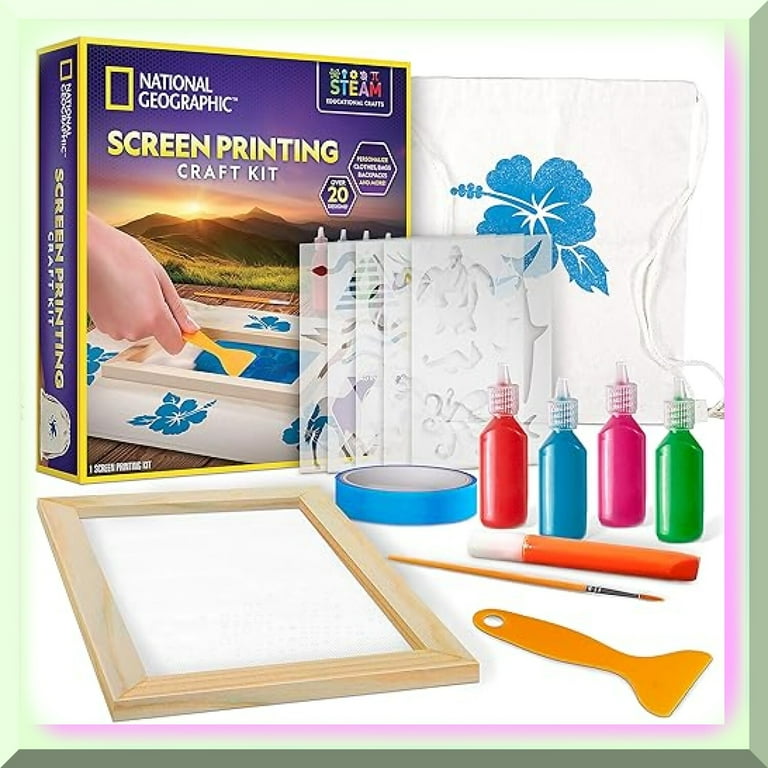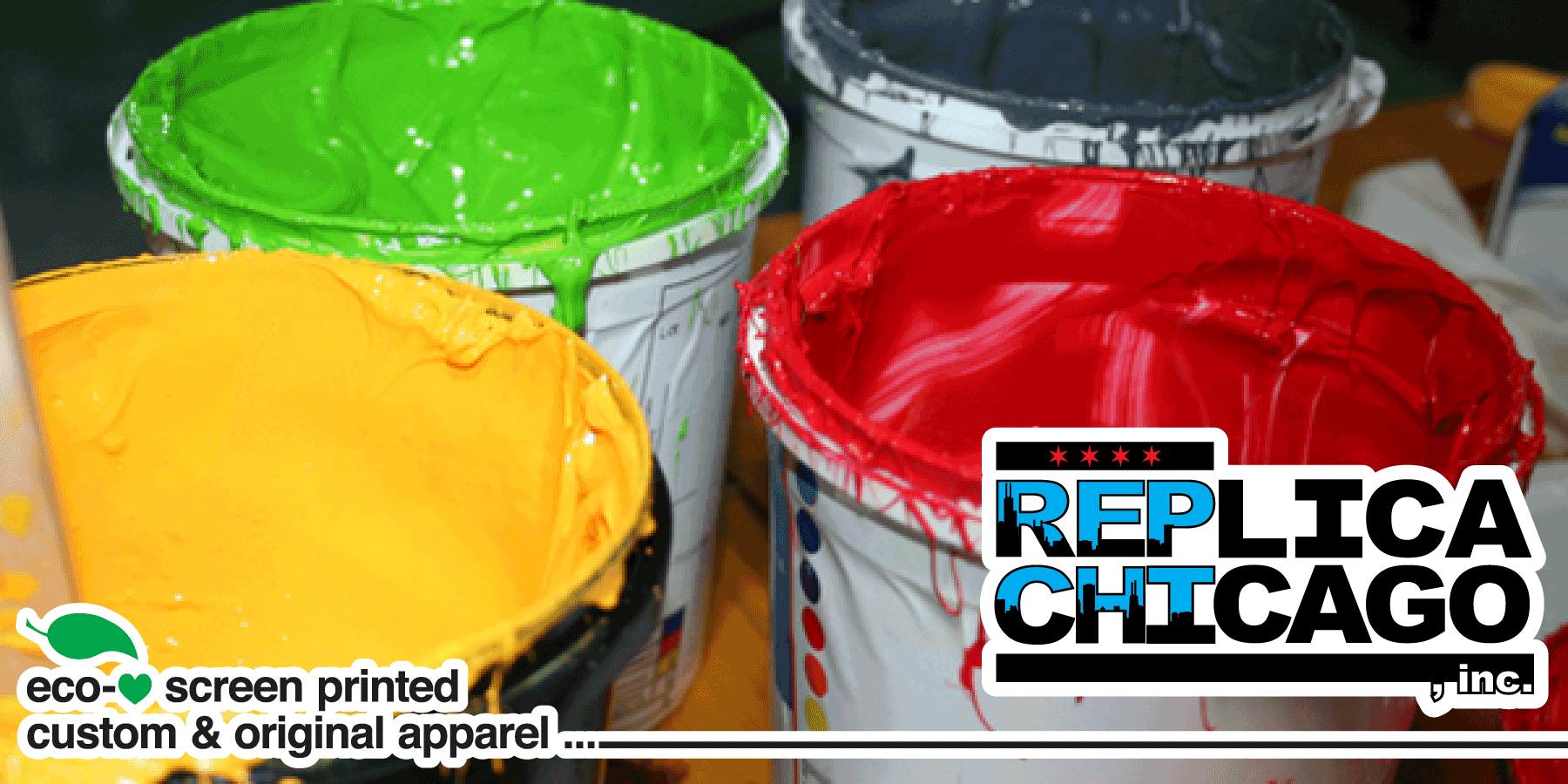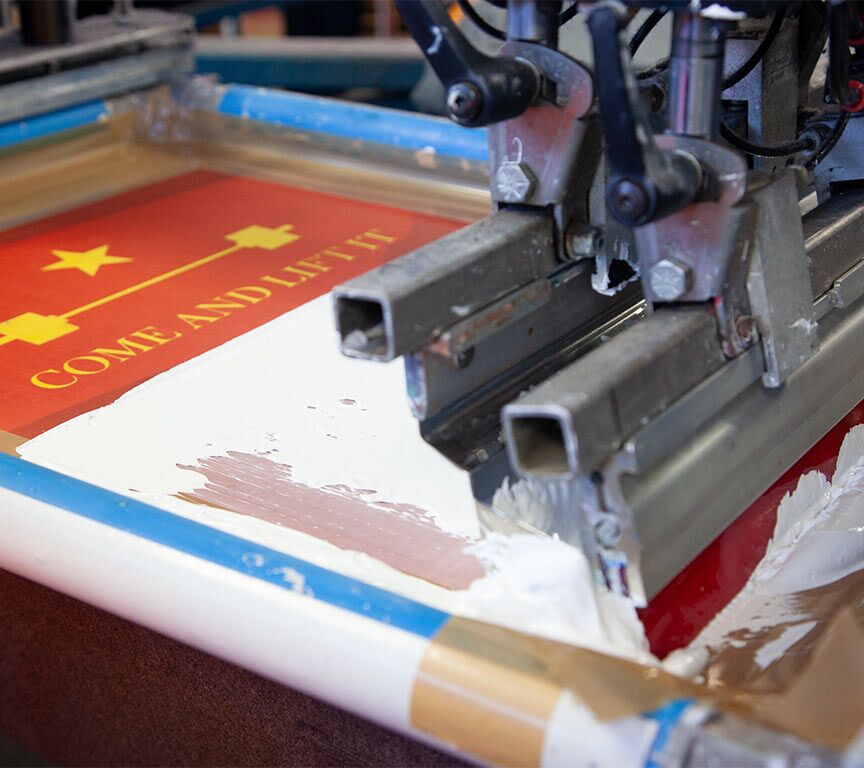Beginner-Friendly Screen Printing Kit for DIY Projects
Beginner-Friendly Screen Printing Kit for DIY Projects
Blog Article
Display Printing Uncovered: Everything You Need to Learn About Tee and Garment Printing Techniques
Screen printing is a remarkable approach that incorporates art with method, using limitless opportunities for creative thinking. Ready to check out the important components that make screen printing an art kind?
The Basics of Display Printing: Just How It Functions
When you plunge into screen printing, you'll uncover it's both a science and an art. At its core, display printing entails creating a pattern, or display, that enables ink to pass through just in particular locations.
Setting the screen over the textile, then utilize a squeegee to press ink through the screen onto the garment. Each step is vital, and mastering them will certainly boost your display printing skills, transforming easy garments right into unique, expressive pieces.
Types of Screen Printing Methods
As soon as you grasp the basics of screen printing, it's time to discover the numerous strategies that can elevate your designs. One popular technique is standard screen printing, where ink is pressed through a stenciled screen. This strategy is fantastic for vibrant, vibrant colors. There's water-based ink printing, which offers a softer feel and is green, yet it calls for a various strategy to healing.
If you're going for great details, think about discharge printing. This method removes color from the textile, leaving a soft, classic look. One more option is plastisol printing, known for its sturdiness and brilliant shades, making it a preferred for several brand names. Finally, experiment with halftone printing to create gradient impacts and detailed designs. Each technique has its one-of-a-kind appeal, so don't wait to try them bent on locate what fits your design best!
Crucial Devices for Display Printing
To accomplish stunning lead to display printing, having the best tools is fundamental. You'll need a tough screen printing structure, which holds the mesh that transfers your layout onto the garment. Next, buy high-grade squeegees; these are necessary for applying ink equally across the screen. You'll likewise require a great direct exposure device to create your displays, in addition to a washout cubicle for cleaning them after use. A trustworthy heat resource, like a conveyor clothes dryer or warmth press, is crucial for treating your prints to assure durability. Do not neglect a proper workspace, geared up with tables and storage for your materials. Ultimately, safety equipment, such as masks and handwear covers, will keep you risk-free from chemicals and inks. With the right tools, you'll be well on your way to producing professional-quality prints.
Selecting the Right Inks and Materials
When choosing inks and products for display printing, you require to take into consideration the kind of ink that works best for your task. Assume concerning textile compatibility to ensure your styles look last and excellent long. Check out environmentally friendly ink options to make your printing procedure a lot more sustainable.
Kinds Of Display Inks
Selecting the right display ink is important for attaining vibrant, resilient prints that fulfill your project's requirements. There are a number of kinds of screen inks to take a look at. Specialized inks, such as metal or glow-in-the-dark, can add one-of-a-kind effects to your layouts.

Material Compatibility Considerations
Comprehending textile compatibility is important for attaining top notch screen prints, specifically because various materials react distinctly to different inks. Constantly evaluate your inks on example fabric to guarantee they stick properly and preserve shade integrity. In addition, keep in mind that material weight and appearance can affect the last end result, so selecting the appropriate ink and material combo is vital for your project's success.
Eco-Friendly Ink Options
Eco-friendly inks are becoming a popular option for display printers that desire to reduce their ecological effect while keeping top quality. When picking inks, take into consideration water-based inks, which are less hazardous and simpler to clean up compared to standard solvents.
Furthermore, try to find inks made from sustainable sources, such as soy or vegetable-based alternatives. By choosing the right inks and materials, you'll not only create sensational styles yet additionally add to an extra sustainable printing procedure. Make the switch, and your prints will reflect your dedication to the environment!
Preparing Your Style for Display Printing

Submit Style Needs
To assure your layout looks dynamic and sharp on material, you'll need to pay close interest to file format requirements for screen printing. Make sure your design has a transparent background to prevent unwanted white sides on your prints. Maintain shade settings in mind; CMYK is standard for display printing, so transform your RGB makes as necessary.
Shade Splitting Up Methods
Shade splitting up is an essential step in preparing your design anchor for screen printing, and grasping it can substantially enhance your print high quality. You'll require to break your style into individual shades, as each shade needs a separate display throughout printing. Begin by determining all the colors in your layout and develop layers each. You can utilize software application like Adobe Photoshop or Illustrator to isolate and separate colors effectively. Be particular to conserve each layer as a separate data, commonly in a layout like TIFF or PSD. This accuracy not just ensures precise color depiction yet likewise improves the printing process. By focusing on color separation, you'll attain specialist and dynamic cause your screen-printed garments.
Resolution and Size
Achieving the ideal outcomes in screen printing starts with assuring your style has the ideal resolution and dimension. Preferably, your art work ought to be at least 300 DPI (dots per inch) for sharp, clear prints. If you use lower resolution, your last item could look less than professional and pixelated.
When it pertains to size, think about the measurements of your print location. Design your artwork to match the last print dimension, preferably creating it in the real measurements you'll be publishing. This way, you'll stay clear of any kind of unforeseen scaling concerns.
Constantly inspect your layout in both vector and raster formats. Vector graphics can be scaled without losing high quality, making them ideal for screen printing. Preparing properly will ensure your layout looks fantastic on every garment!
Step-by-Step Screen Printing Refine
Display printing is a dynamic procedure that permits you to produce dynamic layouts on different surfaces. To get going, you'll need a screen, solution, and your chosen ink. First, prepare your screen by cleansing it completely. Next, use the emulsion equally and let it dry in a dark location. As soon as completely dry, expose your screen to light with your layout positioned on it, which will certainly harden the solution where the light hits, creating a pattern - screen printing kit.
After washing out the unexposed emulsion, your display prepares. Set it up on your printing surface and straighten your garment underneath it. Put ink onto the display and use a squeegee to push the ink with the pattern onto the textile. Lift the screen meticulously and allow the print completely dry. Heal the ink utilizing warmth to assure toughness. That's it! You have actually efficiently display printed your design.
Tips for Successful Screen Printing Projects
While you're diving into your display printing jobs, bear in mind that prep work is essential to success. Start by gathering all your products-- inks, mops, garments, and displays. A tidy workspace aids prevent undesirable mistakes, so clean up before you begin.
Next, validate your art work is high-resolution and appropriately sized for your garment. Examine your display for correct exposure and clean it thoroughly to prevent smudges. When mixing your inks, adhere to the producer's guidelines to accomplish the right consistency.
Throughout printing, use even pressure with your squeegee for regular outcomes. Do not hurry; take your time to confirm each print meets your requirements. After printing, allow your garments completely dry entirely prior to dealing with or packaging them.
Lastly, constantly maintain an example of your help future referral. This method, you can assess your progression and improve your strategies with time. Satisfied printing!

Regularly Asked Concerns
How Lengthy Does It Require To Establish a Screen Printing Job?
Establishing up a display printing job generally takes around 30 minutes to an hour. You'll prepare the screens, mix inks, and readjust journalism. The moment varies based on complexity and experience, so remain arranged!
Can I Publish on Various Material Enters Utilizing the Very Same Method?
Yes, you can publish on various textile types making use of the same method, yet you'll need to change your setups and inks. Some fabrics take in ink differently, so trying out warranties the very best results for every material.
What Are Usual Mistakes to Avoid in Display Printing?
When screen printing, prevent usual blunders like using the incorrect ink, ignoring proper direct exposure times, or missing pre-press checks. Constantly test your setup and preserve tidy screens to guarantee top quality results each time.
How Can I Effectively Tidy and Keep My Display Printing Equipment?
To properly clean and keep your screen printing equipment, you should consistently wash displays with ideal solvents, check mops for wear, and assure all tools are this page saved dust-free and dry. Click Here Uniformity avoids expensive fixings and boosts performance.
Is Screen Printing Eco Friendly Compared to Other Methods?
Screen printing can be a lot more eco-friendly than other methods, especially if you use water-based inks and eco-conscious products. By choosing lasting supplies and practices, you decrease waste and decrease your impact on the planet.
Display Printing Uncovered: Whatever You Required to Know Concerning Tee Shirt and Garment Printing Methods
At its core, screen printing involves producing a stencil, or screen, that enables ink to pass via only in particular areas. Placement the display over the material, after that use a squeegee to push ink through the display onto the garment. One preferred technique is conventional display printing, where ink is pressed with a stenciled screen.When selecting inks and materials for screen printing, you need to take right into account the kind of ink that works ideal for your job.
Report this page